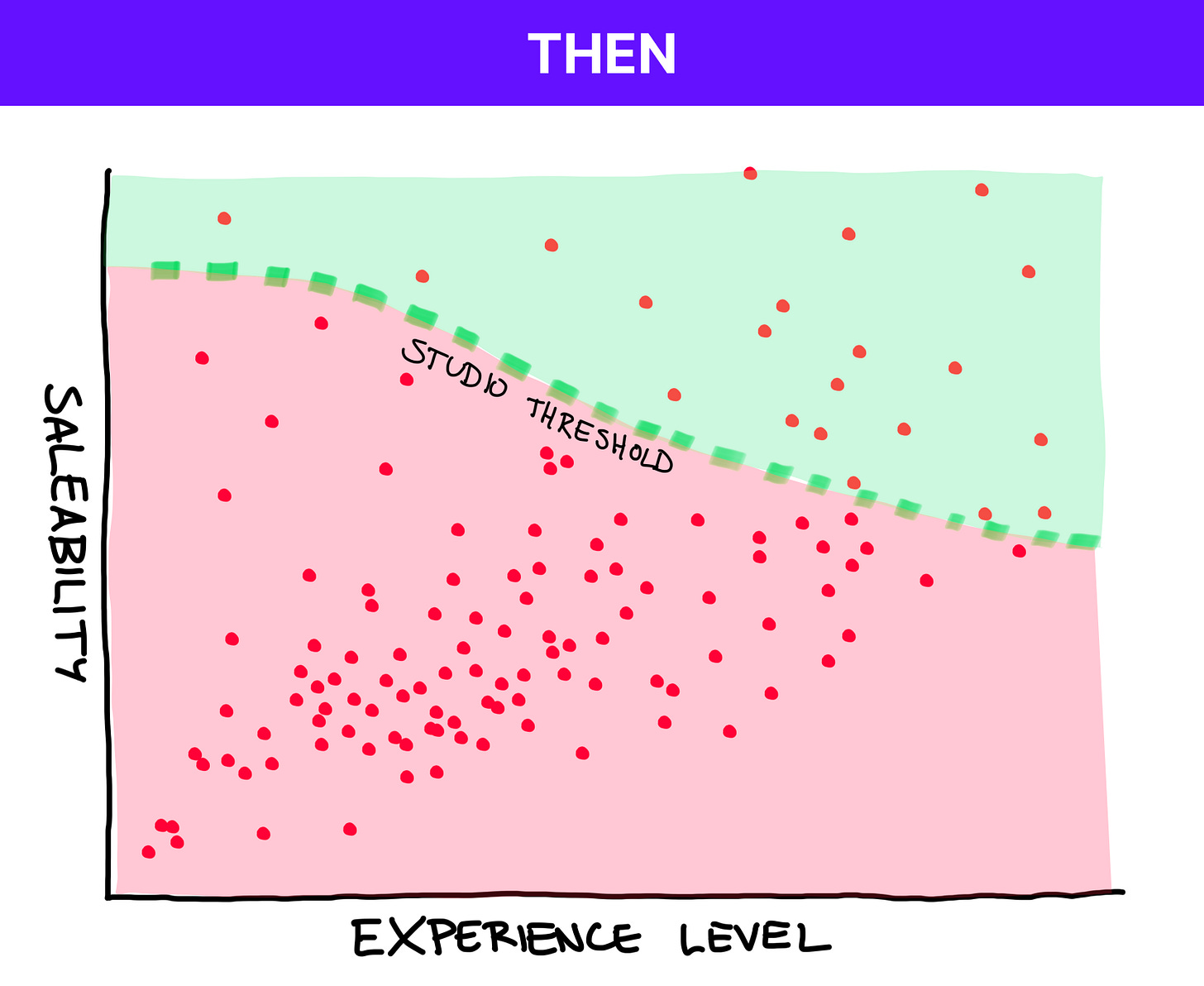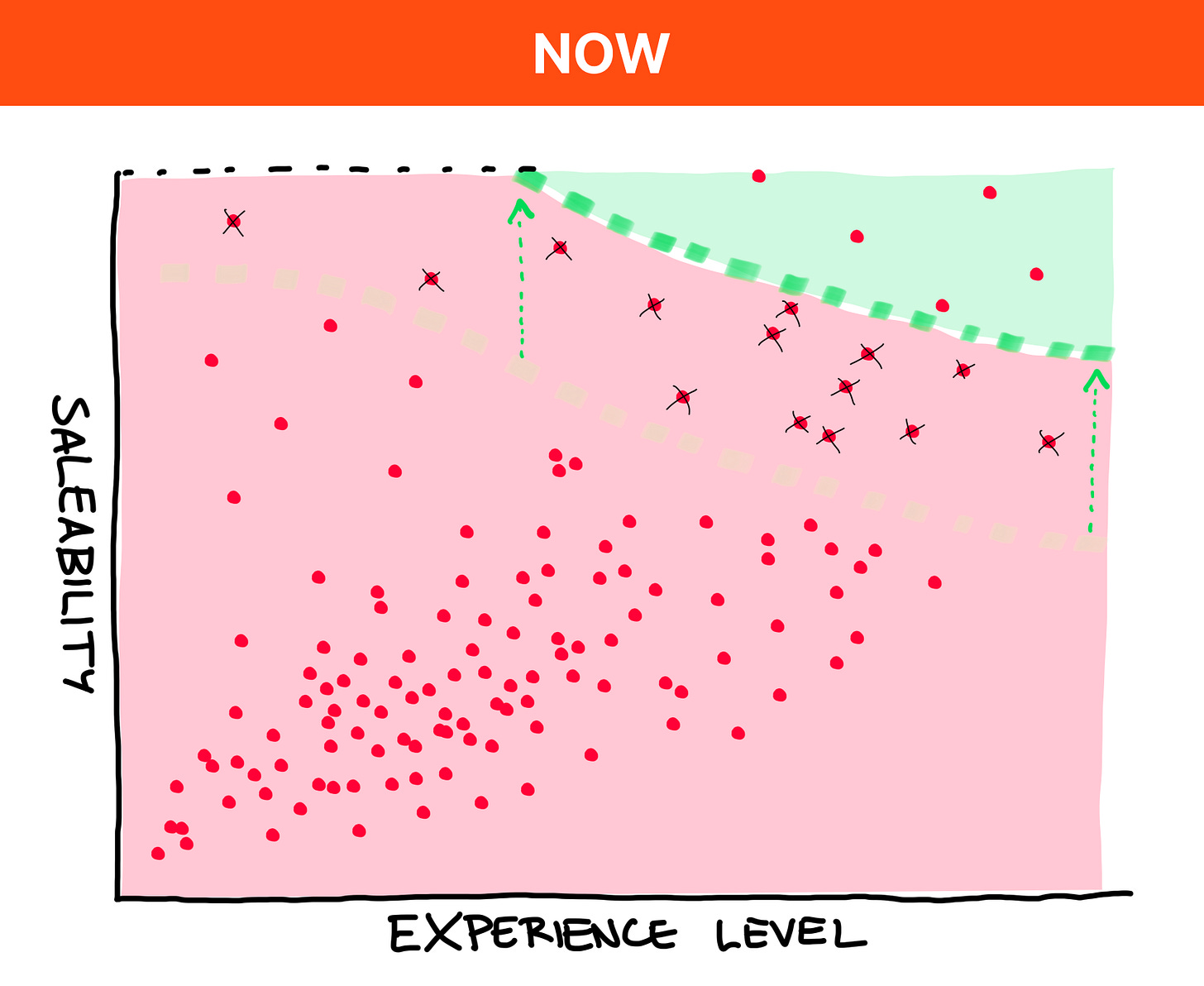Greenlight Yourself Part 1: The New Rules of Breaking Into Entertainment
Why Waiting for Permission Doesn't Work Anymore (And What Does)
The Permission Trap Is Dead
Mark Duplass shared this warning with us in a keynote at SXSW nearly 10 years ago. The mantra has been repeated so many times since then that it’s become a cliché.
But it’s no less true than it was a decade ago when Duplass uttered the words.
No one is going to save you and your project. No one is going to ride in, offer you a sack full of money and offer to package and sell your script because it’s brilliantly written and it would be a privilege just to be a part of it.
In order to establish a career in entertainment, you have to drive it yourself. In other words, you have to be the author of your own story. This is a realization I came to late in my career. After trying desperately to get into a writers’ room for 5 years, I finally managed to do so in 2015, the same year that Mark Duplass shared his keynote.
I was told then that the path to becoming a TV Writer was clear: Get a job as a Writers’ Assistant, move up to Script Coordinator, write a solid pilot sample (or 3), work on the show for a few seasons and get bumped up when the show gets a larger order / staff.
For anyone who has been paying attention over the past 5 years, that model is dead. I’ve written about this broken ladder in another publication I write, Pivot TV:
For many of us, who were already struggling to climb a broken ladder pre-pandemic / pre-strikes, this slump represents the ladder getting knocked over, chopped into firewood and burned to keep us warm during the harsh, 61 degree LA winter 🌴🥶.
Seasons are shorter, runs are shorter, rooms are smaller and hiring at lower levels is basically non-existent. At the time of this writing, I now know very few established writers who are working, let alone early-career writers.
This is bad news to anyone who intends to build their career through the traditional studio system, but for anyone who’s willing to think creatively about an entertainment career, it represents a huge opportunity.
The New Reality
The entertainment industry is currently undergoing the most massive change in modern history. Every relevant piece of industry data points to audience eyeballs moving in droves from legacy media (Film, TV and Streaming) to Social and UGC platforms (YouTube, TikTok).
People aren't just changing how they watch - they're changing what they watch.
How We Got Here
Everyone is aware of the power of social media and other digital platforms to connect people and share information. Still, the rise of these platforms advancing entertainment is a relatively new phenomenon.
MrBeast offers perhaps the most striking example: Starting with YouTube videos that got just a few hundred views, Jimmy Donaldson built a content empire that:
Generated over $700 million in revenue in 2023
Secured a groundbreaking deal with Amazon Prime Video for $100 million
Employs over 200 people in his production studio
Reached 240 million subscribers across his channels
Consistently generates more viewership than most cable networks
The numbers tell the story (pulled from
’s fantastic piece The Relentless, Inevitable March of the Creator Economy):Social video now represents about 1/4 of all time spent with video in the US
71% of Gen Z prefers streaming on social platforms over traditional TV
YouTube receives the equivalent of Hollywood's entire annual output every 30 minutes
Creator economy is growing at 25% annually while traditional media grows at just 5%
Another Shapiro -
(pronounced sha-PIE-row) - cites Dentsu to predict:Social ads will grow 8.7% and Digital will grow 9.2%. A huge share of these impressions and revenues are driven by Creators and the communities they speak to.
People are flocking to UGC and Social platforms for entertainment. And not just on their phones. To certain demographics, YouTube and TikTok IS where entertainment lives.
Meanwhile, TV seasons are getting shorter, renewals are getting more uncertain, power is consolidating, and risk aversion is still - for some Godforsaken reason - on the rise.
The Great Disconnect
The evidence of the shifting audience alignment - from TV & Film to New Media - is irrefutable.
If you believe in numbers and you haven’t recently suffered a traumatic head injury, you must believe in this trend.
Yet so many early-career creatives I talk to are still operating on outdated assumptions and refusing to participate in this shift.
These are people who think they can write their way out of this situation, but the landscape has changed dramatically over the past few years, as illustrated below:
This is a rough approximation, but the red dots on the scatter plot represent creative talent (for the sake of argument, let’s say writers).
The horizontal axis represents a writer’s experience level and the vertical axis represents their saleability - their ability to sell a project or get staffed.
As a writer’s experience level increases, there’s a corresponding increase in saleability. That makes sense: It’s easier for experienced writers to get hired for something.
The green dotted line represents the threshold above which an executive is willing to hire them - for staffing or to buy their project.
Naturally, while there are fewer experienced writers, they are disproportionately the ones who are getting bought and getting staffed.
However, as of a few years ago, it was still possible for a really inexperienced writer to get noticed / get hired/bought based on the quality of their material.
But now, that has all but disappeared. The distribution of talent is the same, but that green threshold has shifted upwards.
It’s now nearly impossible for inexperienced writers to break through based on the strength of their writing alone, and all those writers whose material would have been enough to get them hired before (even the experienced ones) are now disqualified (the x’ed out dots).
Obviously this is an oversimplification, but for some writers, as the market tightens, there’s no level of quality you submit that can get you hired. Just ask your nearest Script Coordinator / junior writer.
That’s because you’re not just competing with other people writing good scripts.
You’re competing with people who have years (or decades) of professional writing experience.
You’re competing with people who have produced material that executives can watch right now.
You’re competing with people who have built enormous audiences on social platforms.
Of those three things, there’s not much you can do about #1 unless you have a time machine.
But #2 is something you can pick up and start doing tomorrow, and #3 is something you can build by doing enough of #2.
So You’re Telling Me to Go on TikTok?
Sorta!
While there are a number of ways for early-career (and, to a certain extent, mid-career) creatives to produce and self-distribute projects, including independent financing or partnering with a small production company, I believe the most accessible way for most people is via social media / UGC platforms like TikTok, Instagram and YouTube.
An important note: At the time of this writing, TikTok was banned by U.S. lawmakers and this was upheld by SCOTUS. The app was not available to use in the U.S. as of this Sunday morning, but then just a bit ago they came back online because President Trump or something??
Apparently I don’t know how this shit works.
But the broader point I’m trying to make is that in order to get noticed in Hollywood - really, anywhere - you have to MAKE THINGS and get them out in the world. I say this for several reasons:
To hone your storytelling craft and understand how your written material translates into filmed stories.
To find an audience and discover what resonates with people.
To have something besides a script to show to the people who are hiring.
The list of success stories based on scripted content that have thrived on YouTube, TikTok and other social platforms is growing, but here are a few examples:
Bistro Huddy - Started as an social media skit about a chaotic restaurant, grew to over 7M followers, and the creator now makes over $1M a year on the series.
Milk & Serial (That's a Bad Idea) - Horror-comedy group that grew from YouTube sketches to making a full-length horror feature that has been profiled in major trades and has reached millions of views, cementing them in the Hollywood establishment.
Jack Wagner - Built his following through directing music videos and co-hosting the comedy podcast "Yeah But Still," then created "Otherworld," a hit paranormal podcast that's grown to hundreds of episodes and is now being developed for television.
And of course, Quinta Brunson, who started making microcomedy videos on Instagram, grew to viral fame through BuzzFeed sketches, then wrote and starred in her own Instagram series before creating "Abbott Elementary" - now one of ABC's most successful network shows and winner of multiple Emmys.
“But,” you say, “It’s not that easy just to make a project, and after all that effort, after all that time, you may still end up with nothing.”
Sure, except that’s the case with pilots or feature scripts too. I know dozens of writers who have a stockpile of pilots / features that haven’t been bought, that haven’t gotten them staffed, that haven’t even gotten them representation.
Don’t get me wrong: It’s a good skill to maintain (my writing partner and I have written a handful of decent-ish samples), but the likelihood of a having a good script (and only a good script) jumpstart your writing career is diminishing by the day.
Those who ignore this trend are going to miss out on participating in a tidal wave of self-distributed entertainment.
And next time, I’ll debunk some common myths about riding this wave.
Stay tuned,
Jon









Thanks for sharing Industry News as an Investigative Journalist. You got down with this post.
This is an excellent breakdown. Great case studies to emulate as well. Getting lucky in the Hollywood machine is so intoxicating and you immediately forget all the practical lessons that got you there. You think you’re different from everyone else and you can get lucky again. But we’re all on the same playing field now. Do your peers like what you’re doing or not? Thx for writing this.